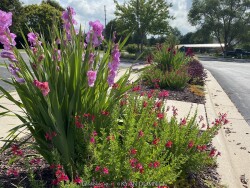
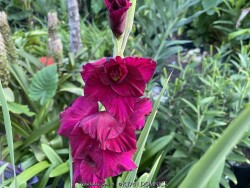
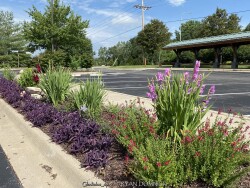
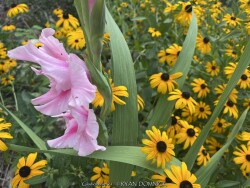
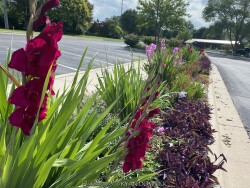

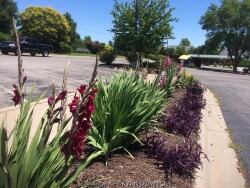
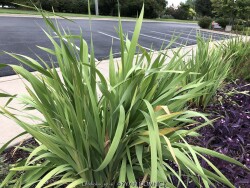
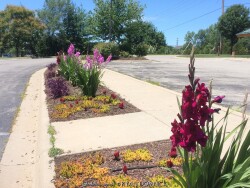

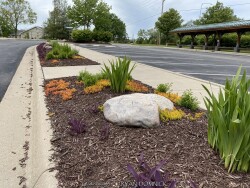



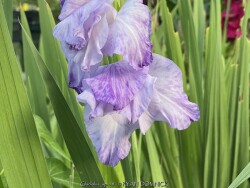
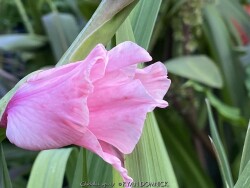
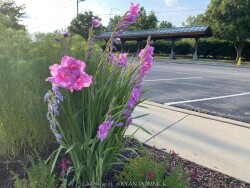
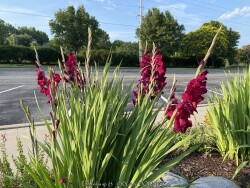
Plant Min Zone: 5b
Plant Max Zone: 10b
Sunlight: Full Sun, Part Sun
Water / Rainfall: Average
Soil Quality: Average, Rich
Bloom Season: Early Summer, Summer, Late Summer
Flower Color: Yellow, Red, Pink, Purple, Mixed Colors
Berry / Fruit Color: None
Spring Foliage Color: Green
Summer Foliage Color: Green
Fall Foliage Color: Green, Yellow
Evergreen Foliage: No
Winter Interest: No
Scented Flowers: Yes
Drought Tolerance: Medium
Wet-Feet Tolerance: Low
Humidity Tolerance: Medium, High
Wind Tolerance: Medium
Poor Soil Tolerance: No Extreme Soils
Height: 1.5' - 2.5'
Width: 1' - 1.5'
Growth Rate: Medium
Service Life: Long: 5-10 years
Maintenance Need: Low
Spreading Potential: Low
Yearly Trimming Tips: Bulbs Do Not Need Any Trimming: Let Foliage Die Back Naturally.
Plant Grouping Size: Small Grouping of 3-5
Best Side of House: South Exposure
Extreme Planting Locations: Resistant to Rabbits
Ornamental Features: Multiple Seasons of Interest, Long Blooming Season, Large Tropical Foliage / Flowers
Special Landscape Uses: None
Possible Pest Problems: Spider Mites, Grasshoppers, Foliage Disease, Stem/Crown Disease
Plant Limitations: May get Occasional Winter-kill, Needs Thick Winter Mulch
Shippable in 2026: YES
Raintree Hardy Gladiolus (Gladiolus 'Raintree') are typically grown for their mid-summer flowers and vertical iris-leaf foliage. The plants are temperate and subtropical herbaceous perennial bulbs native to areas with a summer wet season and dry winter. Gladiolus are hardy outside as a perennial when established and with minimal effort at least up to zone 6a. During the growing season, fertilize, water regularly, and plant in full sun. Plant these bulbs in the ground at least 6-8" deep with 3-4" of mulch to enjoy a wonderful tropical flowering effect! Foliage may look bedwraggled by fall so it is ok to cut back foliage at that time. They can also be grown as a flowering summer patio plant. If growing as a potted plant and trying to overwinter, allowing the foliage to frost is ok, it will not kill the root system. However, do not allow the pot with rootball to freeze solid or go below 20 degrees for more than a few hours; move into a cold garage or basement over the winter with no watering. Cut back and allow to go dormant and place entire pot back out in April or May with a time-release fertilizer. Another more labor intensive way to overwinter gladiolus is to remove them from the dirt, dust with fungicide, place in box with sawdust, and keep in the refrigerator. We consider this method old-fashioned and too much work but ok if you only want to save a few bulbs. If digging from the ground in colder zones, just save a big chunk with the dirt intact and place into a large pot in the garage. In a customer's garden in Lawrence, KS (zone 6a), four established specimens planted over 4-6" deep and mulched 2-3" with wood mulch survived -17 degrees F. During the arctic blast of February, 2021, lows down to -17 degrees F on Feb 16th, 2021 were recorded. The longevity of this cold blast was also impressive: 10 days on a row with highs of 10-15 degrees F or lower, 8 nights of lows in the single digits and negatives, and 36 straight hours of 0 degrees F and mostly lower. We plan to propagate these 'Raintree' clones in 2022-2023.